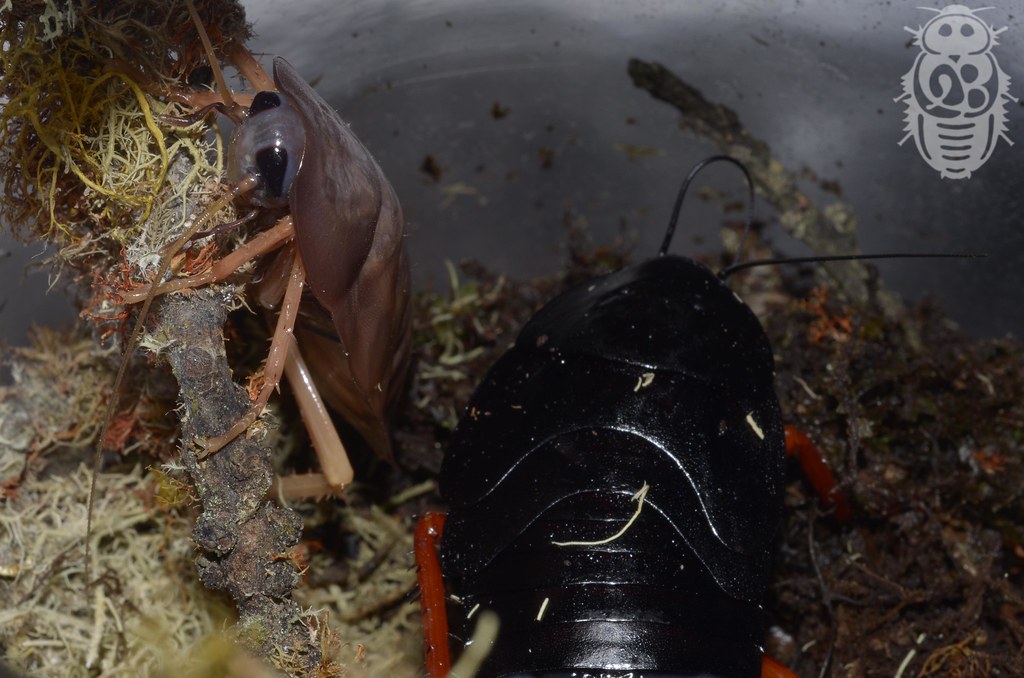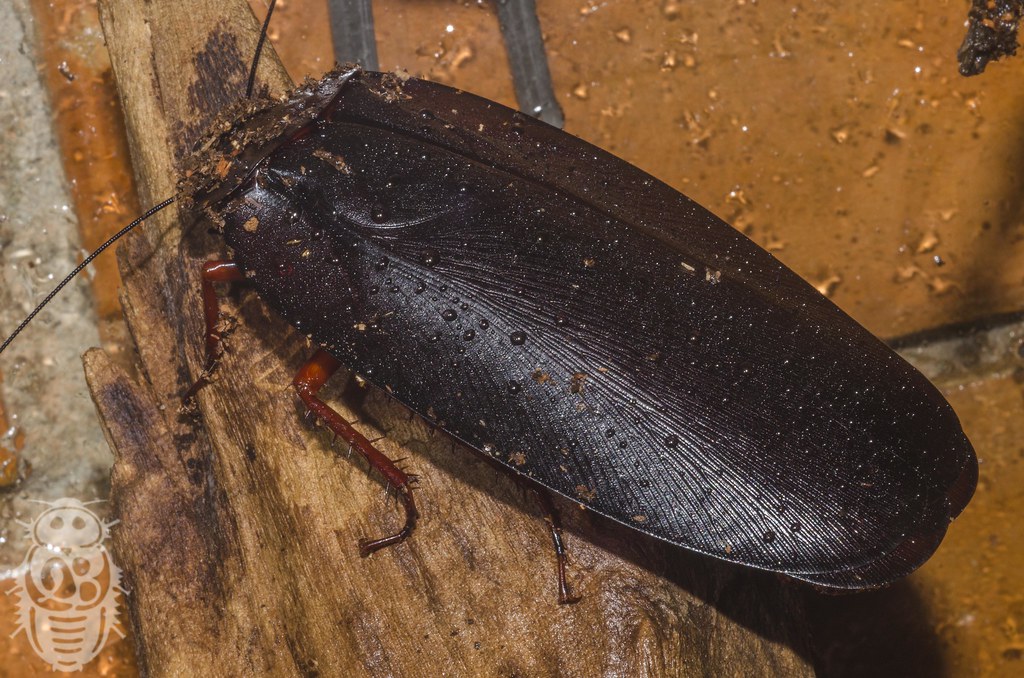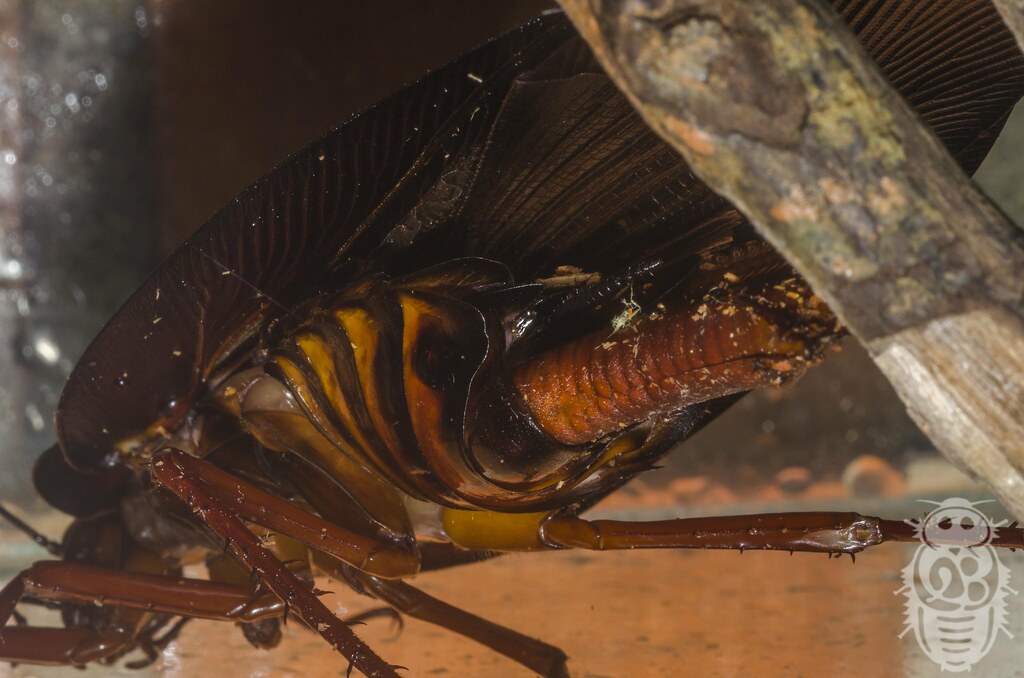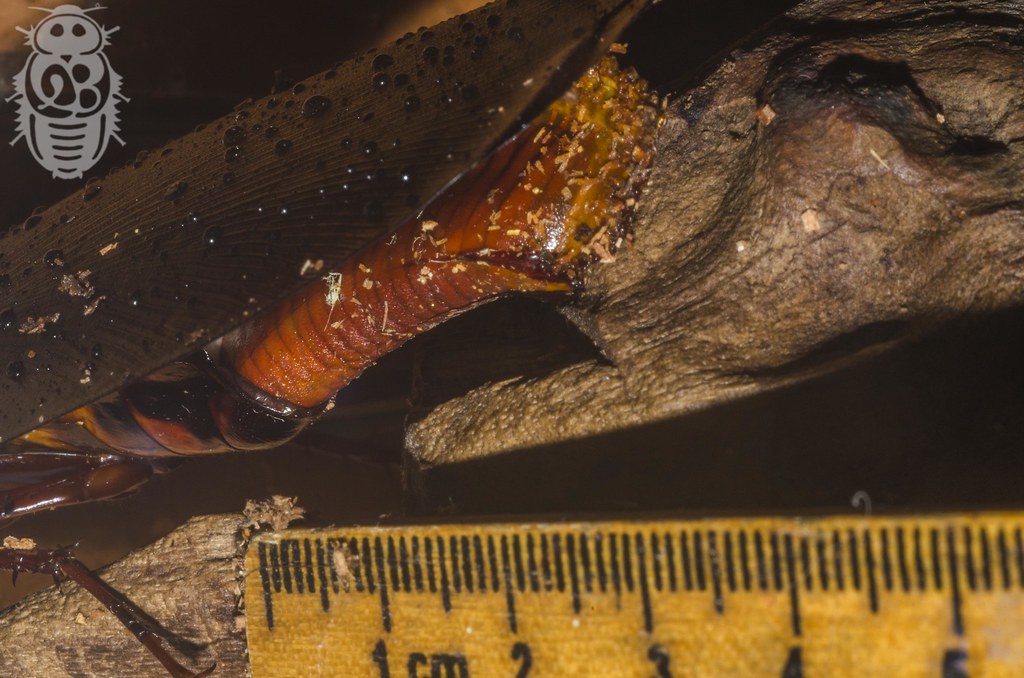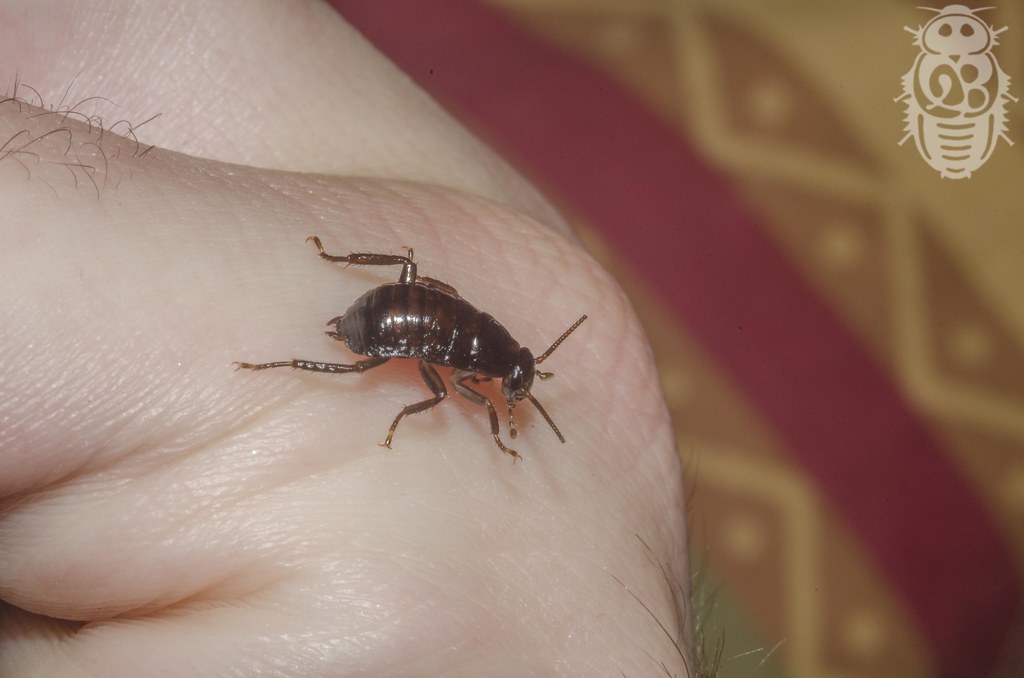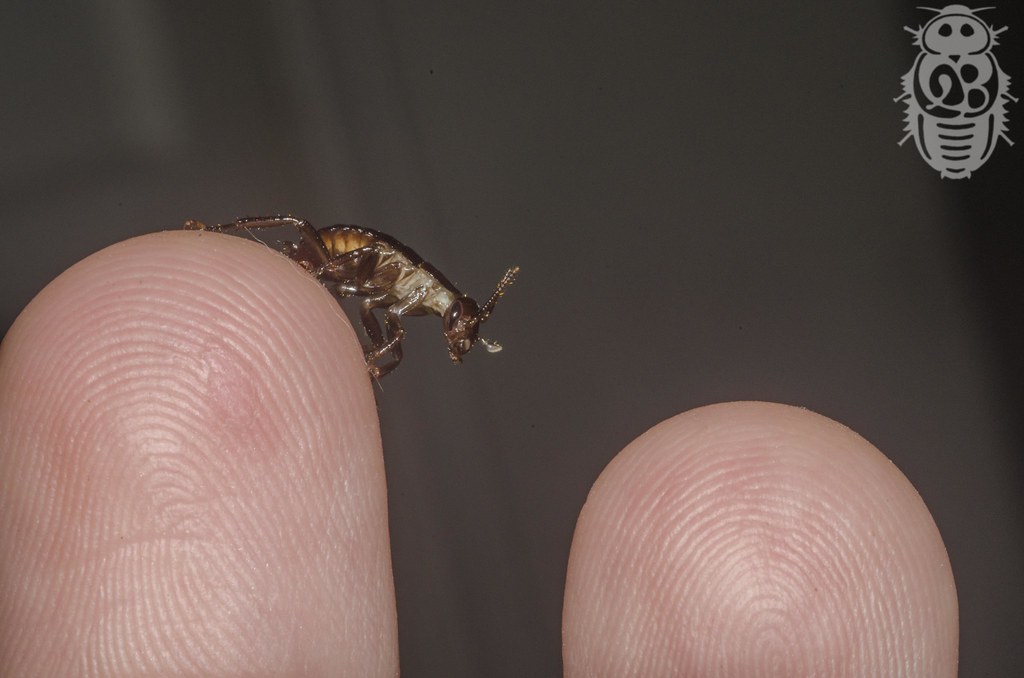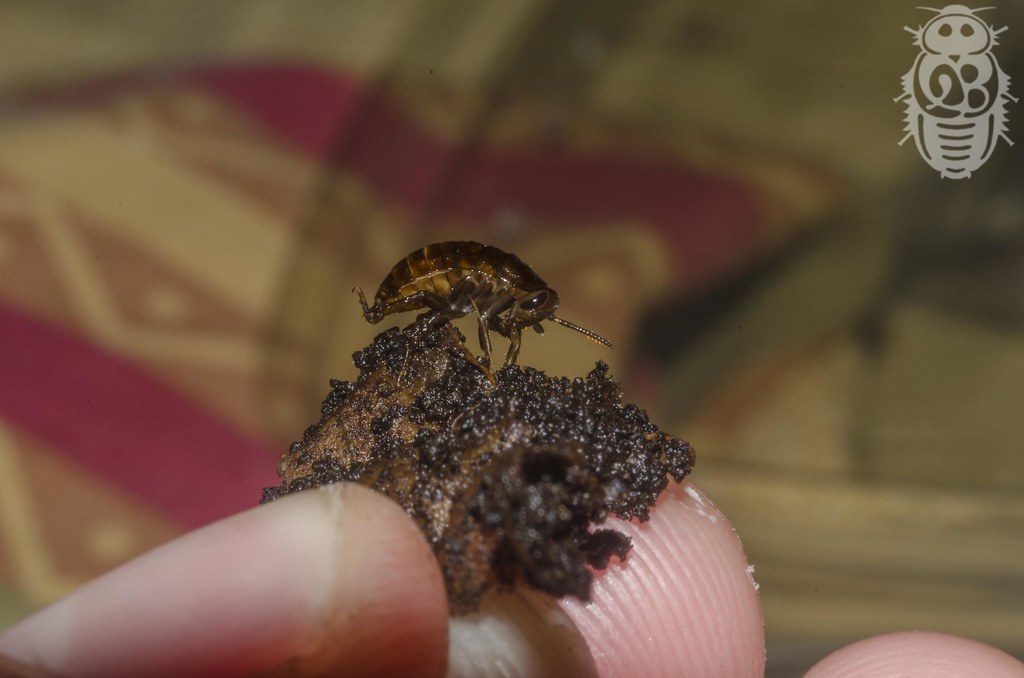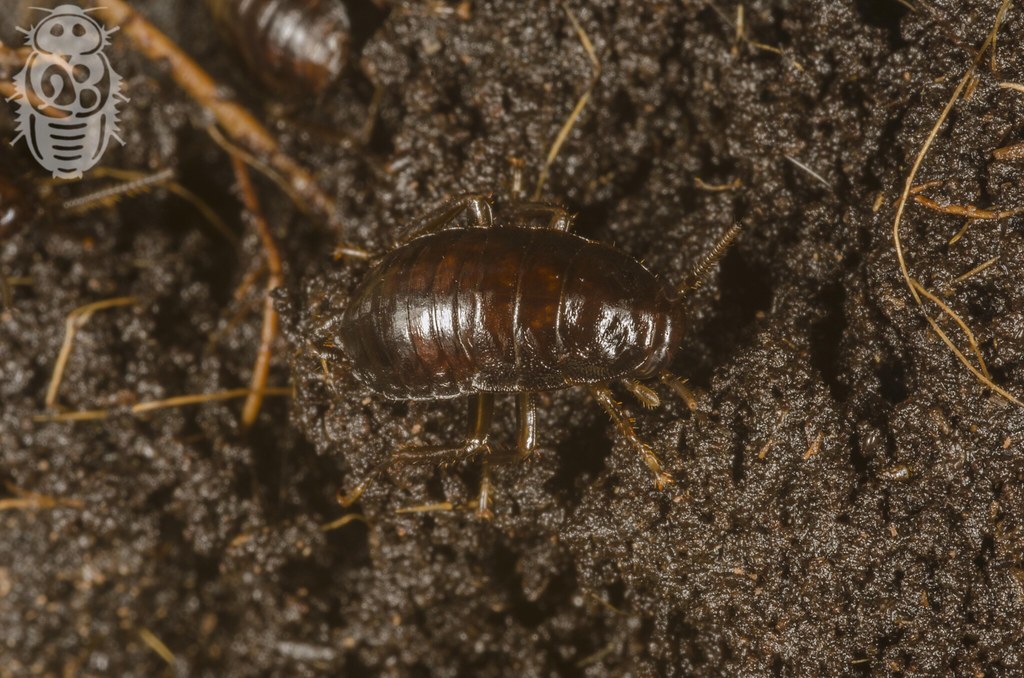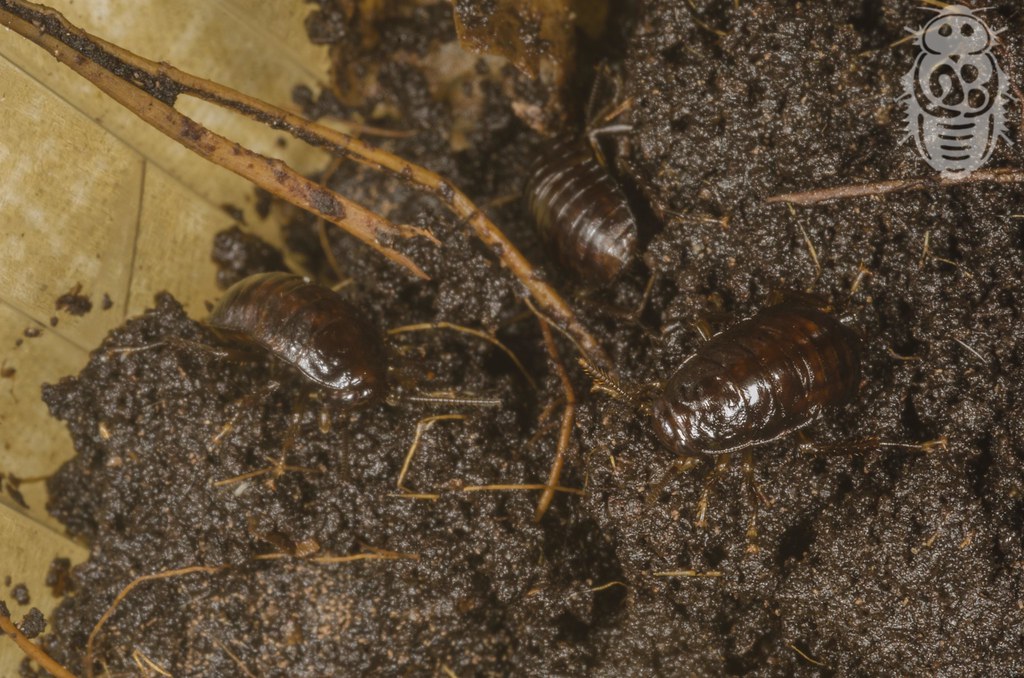Fantastic work and photos!Hello friends!
Spoiler: Yes, I did it, but...
Some months ago I've start my first topic here in the forum, asking for information about care and breeding of the genus Megaloblatta, to find that as it seems, there's not any available information at the moment, and... that every known attempt of breeding this genus has failed, specifically at the point of incubating their oothecae.
First topic here:
Now the news... As you can see in the other thread, I've started with 4 nymphs, but one died in my process to find their right food. Impressively the other 3 survived my clumsiness to reach adulthood. I've learned over this period that they could receive conventional roach food (cat/dog food, fish flakes... oats), but in very low quantity, and they really loved sweet fruits, specially mango and bananas. And the most important: the right protein source seems to be raw meat... I use chicken hearts that they eat with a lot of passion
Fresh molted nymph:
Adult female:
The ooths are huge (between 4-5 cms)
Between the 3 survivors, I've got only one female... that laid only 4 ooths during her life.
And here started the tricky part.... for after around 5 months the first laid oothecae was spoiled, fly worms emerging from inside. And then the second one!!!... Of course I was doing it wrong.
So I took the determination of dissecting the third oothecae to check out what were happening. And I've found alive healthy embryos forming themselves inside... so the real problem were during the hatching.
I've been really careful at the moment of dissection, and the eggs inside survived enough to hatchAnd they seems to be the first generation of Megaloblatta breed in captivity.
Pictures (Notice the antennae shape... they are much shorter in proportion than in big nymphs... that's adorable!!!)
I have around 40 of them... and I'm already finding new details about them, for example... they are not interested in the same kind of fruits than the big ones likes, but I don't want to provide any information about it until having a real experience with it.
Personal conclusion: Of course dissection is not the right method to hatch these ooths, but I was desperate and it worked for this time... at least I have enough individuals (much more than at the beginning) to keep on breeding and try something better next time.
I have already an hypothesis... It could be that the oothecae case is very strong and hard in some Nyctiborinae species (because some other breeders and myself have found the same problems with some of their species), so perhaps the oothecae have to undergo a process of degradation by the environment during the incubation, something similar to the scarification process in some species of plant seed's. I would risk to affirm that that's why, in this case, M.longipenis lay ooths in "dirt places" (for I've found my girl released ooths covered with substrate in really muddy spots). So at the moment of hatching the ooths should be weak enough to allow the nymphs emerge, which is not possible with the aseptic methods that breeders (including myself) use to use...
I will try to incubate next generation really moist and with a lot of springtails and as always... I'm open to you suggestions
Best regards! :lol:
Guest viewing limit reached
- You have reached the maximum number of guest views allowed
- Please register below to remove this limitation
- Already a member? Click here to login
You are using an out of date browser. It may not display this or other websites correctly.
You should upgrade or use an alternative browser.
You should upgrade or use an alternative browser.
Megaloblatta longipenis — Breeding Project
- Thread starter Xenoblatta
- Start date
Xenoblatta
Third Instar
Hello friends! Sorry for the long absence...I'm very interested, how did you go about dissecting the oothecae, without killing all of the nymphs?
Well... I did it with entomological scissors and a lot of care. Next time I'll make pictures... I'm afraid I will have to repeat this procedure with my Nyctibora ooths :-(
Yes! Actually in the wild I've never seen an adult over the floor... only very high in the trees; and on the other hand, I've never seen nymphs on the trees. Still could be casualty, I mean... I haven't spent enough time watching them in their habitat, but it looks like an behavioural pattern :-DWhat was really interesting for me to read were the observations on diet preferences between adults and nymph. This means that they possibly occupy different habitats in the wild
Yes.... and yes :-D your feelings seems to be right hahaha...I have a feeling the nymphs spend most of their time in the undergrowth, while adults tend to spend more time above the forest floor. So the smaller nymphs probably have a diet more similar to other roach species, I have a feeling they'll eat more grain based foods than large nymphs or adults.
Thank you very much @Test Account! :-D I already have it... it is certainly a very good book!Xenoblatta, I highly recommend this book.
I'll be updating this information every time I've got news... But at the moment the nymphs are doing well, at least I'm pretty sure they are eating well
Have you tried offering ootheca shells to isopods and other things to see what might chew on them?
I second this question, I have a feeling certain isopods might come in handy for gnawing down the ooths a bit, you should try offering a Nyctibora oothecae to some isopods before cutting them open.Have you tried offering ootheca shells to isopods and other things to see what might chew on them?
CockroachTV
First Instar
congratulation for the offspring. 
Xenoblatta
Third Instar
Yep, I already have some ooths in cups with small isopods (two species) and springtails.. they don't seems specially attracted for them, so the ooths use to have over them as many bugs as any other spot on the substrate.... hopefully they are slightly making their (supposed) magicHave you tried offering ootheca shells to isopods and other things to see what might chew on them?
Yep... I already did it with other fresh Nyctibora ooths, I think it was too late for the ooths I had to open (...for the embryos seems too ready to hatch)you should try offering a Nyctibora oothecae to some isopods before cutting them open.
Dankeschön!! I really like your videos BTW :-D!!congratulation for the offspring.
Android raptor
Third Instar
To paraphrase Jurassic Park, you did it. You crazy son of a bitch actually did it.
My day has been pretty crappy since one of my rhinos died, but at least this is some fantastic news. I hope these make it to the states someday.
My day has been pretty crappy since one of my rhinos died, but at least this is some fantastic news. I hope these make it to the states someday.
Hell-Spawn
Fourth Instar
Any updates?
Arthroverts
Seventh Instar
Any updates with this @Xenoblatta? Or does anyone know what happened with the project?
Thanks,
Arthroverts
Thanks,
Arthroverts
I've asked him in PMs, and sadly, I believe his nymphs died only weeks after hatching, perhaps due to their oothecae being surgically opened up for them rather than it hatching in a more natural manner, the nymphs could have been just a little too underdeveloped or something...Any updates with this @Xenoblatta? Or does anyone know what happened with the project?
Thanks,
Arthroverts
Arthroverts
Seventh Instar
That's too bad. These large species are certainly being a pain to get established in captivity.I've asked him in PMs, and sadly, I believe his nymphs died only weeks after hatching, perhaps due to their oothecae being surgically opened up for them rather than it hatching in a more natural manner, the nymphs could have been just a little too underdeveloped or something...
Thanks,
Arthroverts
Yeah, Ectobiids in general are usually a pain to get well established in the hobby, especially the Nyctiborinae, since we don't know how the heck to hatch their oothecae yet...That's too bad. These large species are certainly being a pain to get established in captivity.
Thanks,
Arthroverts
Last edited by a moderator:

